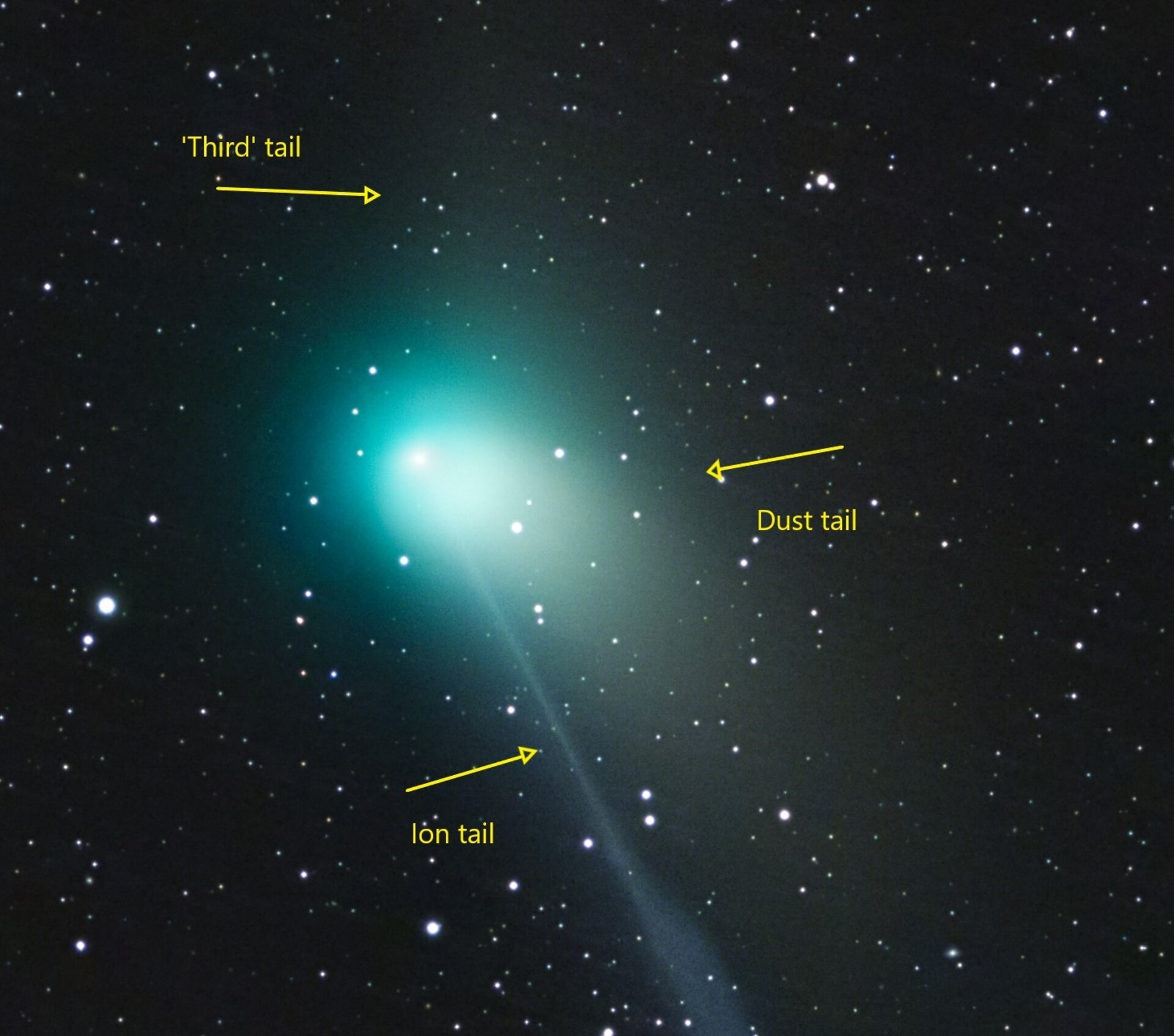Recent observations by astronomers using the W. M. Keck Observatory have confirmed the presence of a rare and almost unheard of “anti-tail” or “anti-solar tail” on interstellar object 3I/ATLAS.
As someone who follows science news, you are probably aware by now of our third interstellar visitor (that we know of), known as 3I/ATLAS. On June 1, the object was found hurtling through our Solar System on an escape trajectory, and was soon determined to be a comet from another part of the galaxy altogether.
Despite many people really wanting it to be aliens (that includes us) the evidence is all in line with it being a comet, albeit one with unusual properties that may take some time for astronomers to explain. This is only our third interstellar visitor, after all. One strange observation, first spotted back in August and confirmed with further observations from other telescopes, was that the comet appears to have an anti-tail.
As comets approach the Sun, the volatile ices within them sublimate (turn from solid to gas without an intermediate liquid phase), lifting gas and dust grains off the surface. As the comet travels, radiation pressure and the solar wind pushes the dust and gas away from the Sun’s direction, creating a distinctive cometary coma behind it.
Or at least, that’s what we see in most comets. In some comets, in addition to the tail and the ion tail, it is possible to see an “anti-tail”, pointing towards the Sun.
“Occasionally, a comet can be seen also showing a ‘third’ tail apparently pointing towards the Sun. This is known as an ‘anti-tail’ and is an optical illusion,” the European Space Agency explains of one type. “The tail is really pointing directly away from the Sun, but because of the Earth’s relative location in space, we see the wide tail, fanning out behind the comet and appearing to be on either side of the central region containing the nucleus.”
The three tails seen on Comet ZTF.
Image credit: Oscar Martín (startrails.es)/ESA annotation
Looking at 3I/ATLAS, astronomers believe they have found the second type of anti-tail.
“Observations of interstellar comet 3I/ATLAS at 3.8 au show an elongated coma similar to a cometary tail but pointing in the direction of the Sun,” a preprint paper by Harvard astronomers Avi Loeb and Eric Keto explains, adding “this type of anti-tail, not a result of perspective, may not have been previously observed.”
In a separate blog post, Loeb went further, pushing the possibility that 3I/ATLAS may not be a natural object.
“Imagine noticing a new animal in your backyard with a tail coming out of its forehead instead of its rear end. After looking at its image, experts argue that it must be a cat because cats have a tail. You point out that cats do not have an anti-tail but the experts dismiss the anomaly and keep telling reporters that any street animal with a tail must be a cat,” he writes. “You also calculate that the animal is at least a thousand times more massive than the only street cat that was previously identified in your backyard, but experts dismiss the anomaly and argue that some cats might be much bigger than others.”
However, as pointed out by Jason Wright, professor of astronomy and astrophysics at Penn State, these anti-tails have been observed before, dating back to at least 1974 with observations of Comet Kohoutek.
“With a rotating comet nucleus; ejecta from a spot can come off with heliocentric velocity that puts it either in front of or behind the nucleus – it does not matter which side it starts from,” Michael Busch, NSF Astronomy and Astrophysics Postdoctoral Fellow, explained on BlueSky. “Small dust and ejected gas gets pushed out by radiation pressure and solar wind. But larger pieces of ejecta spread out along the orbit; both in front of and behind the nucleus. For solar system comets, this eventually gives a meteoroid stream around the entire orbit.”
While anti-tails are not unheard of, they are still rare and pretty interesting. The new study based on the Keck observations measured the elements present in the coma, finding a few as-yet-unexplained mysteries.
“The Ni is more centrally concentrated than CN, with the majority of Ni flux coming from the innermost 2,000 km [1,243 miles] of 3I/ATLAS,” the team explained. “On the other hand, the radial profiles suggest that CN, though still concentrated near the nucleus, extends farther out into the coma.”
More will be learned as we continue to monitor the object, following a brief gap as it traveled to the other side of the Sun from our perspective. More surprises will likely follow.
Source Link: Interstellar Object 3I/ATLAS Has A Rare "Anti-Tail", New Observations Confirm
